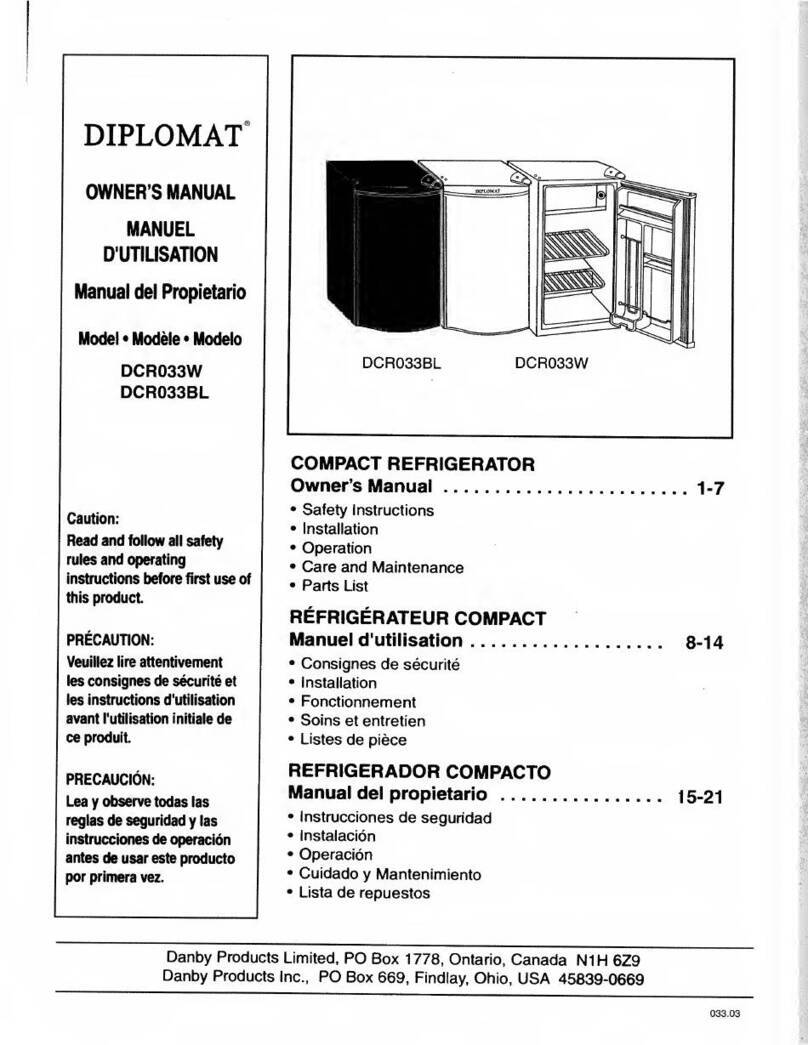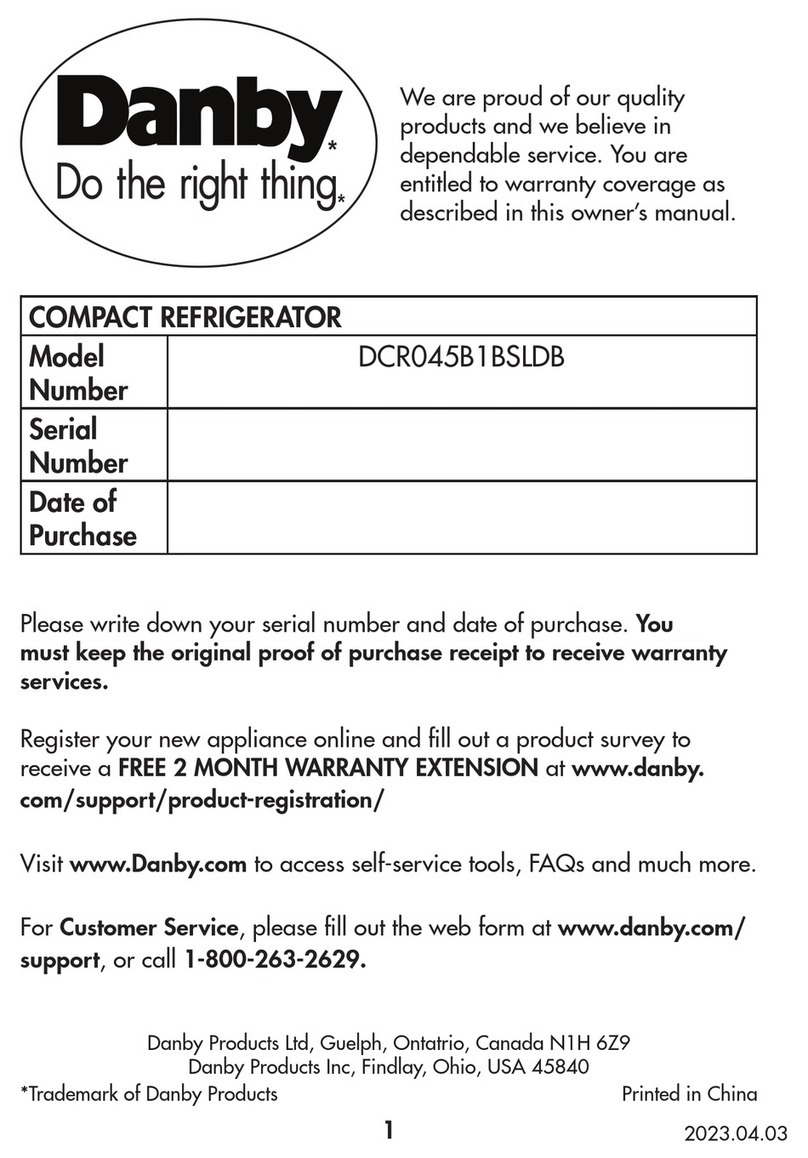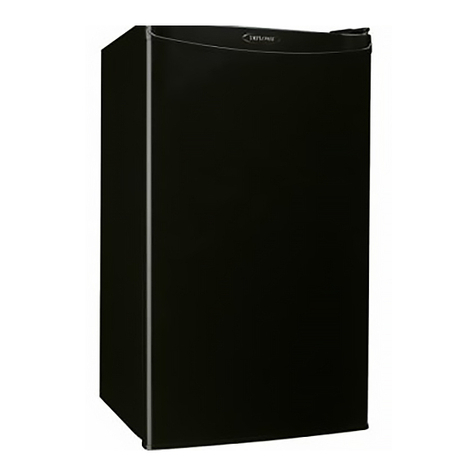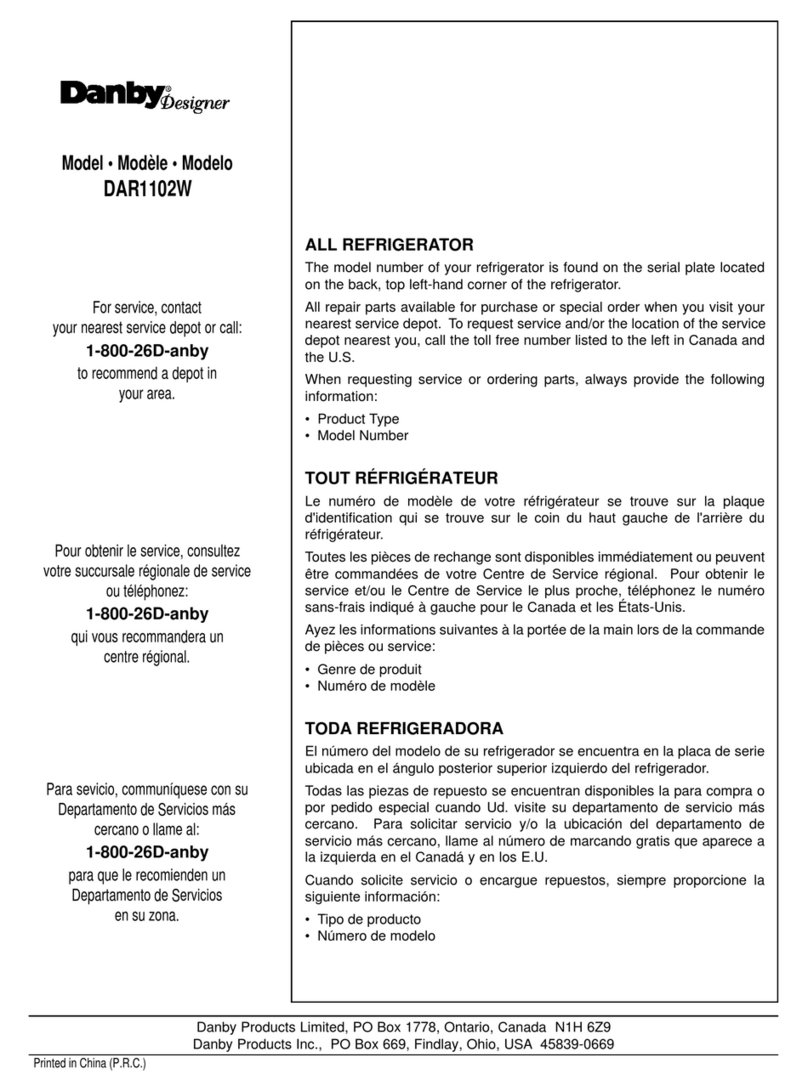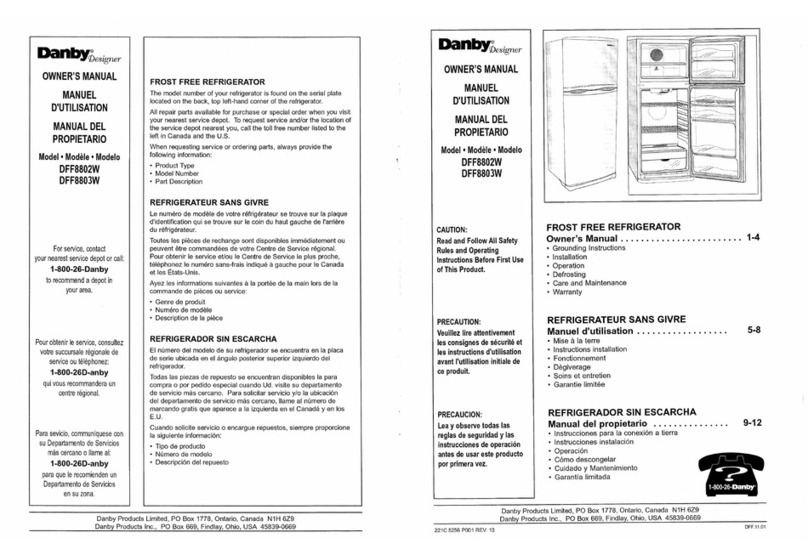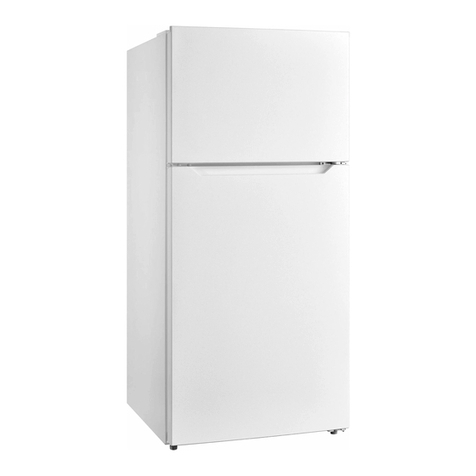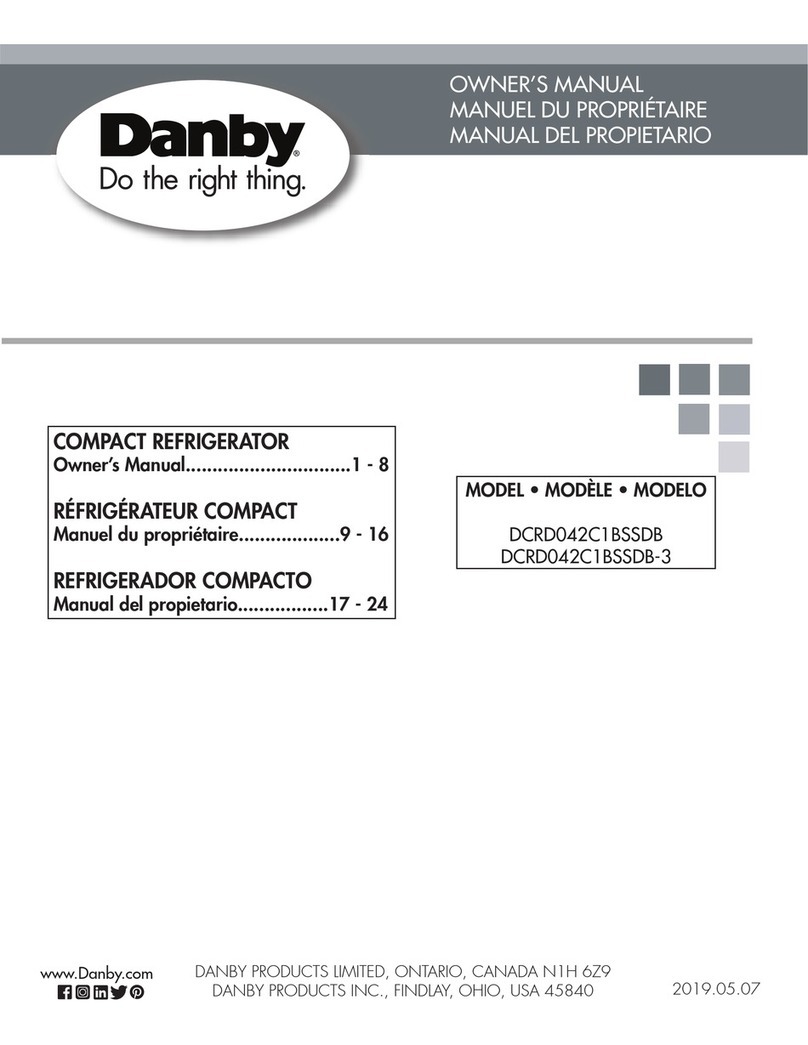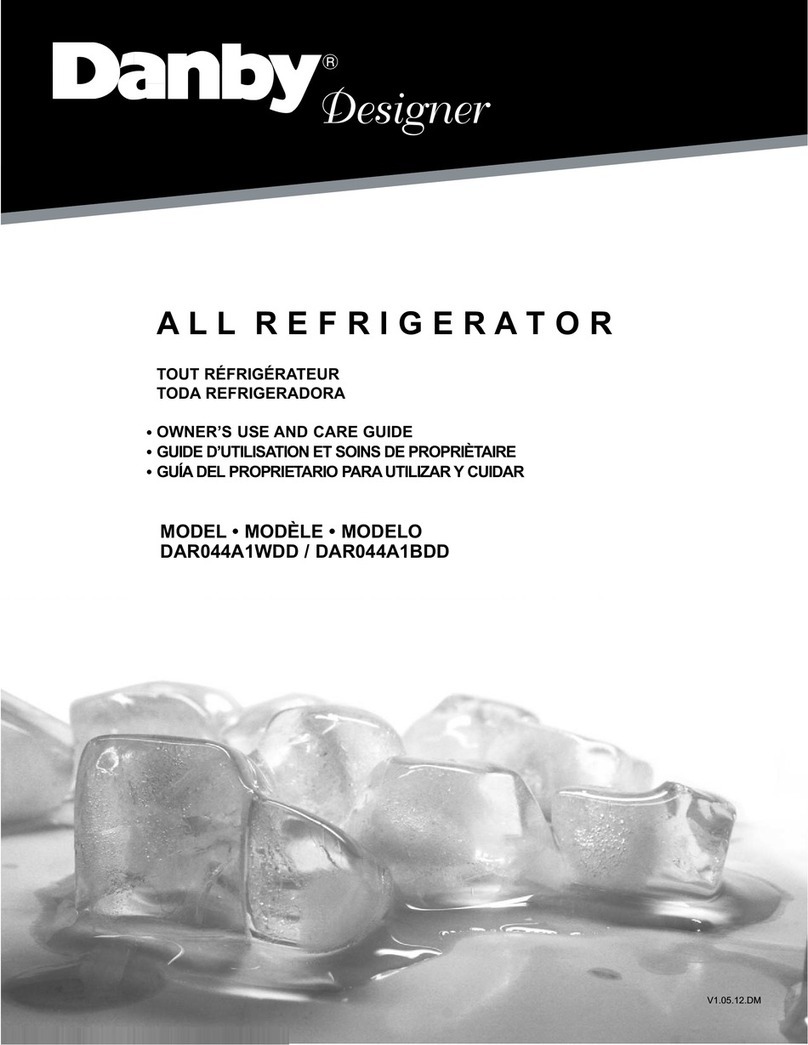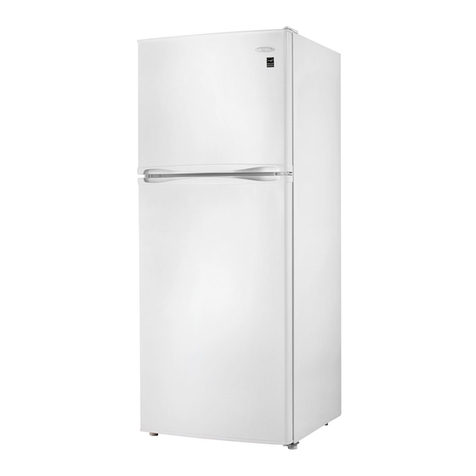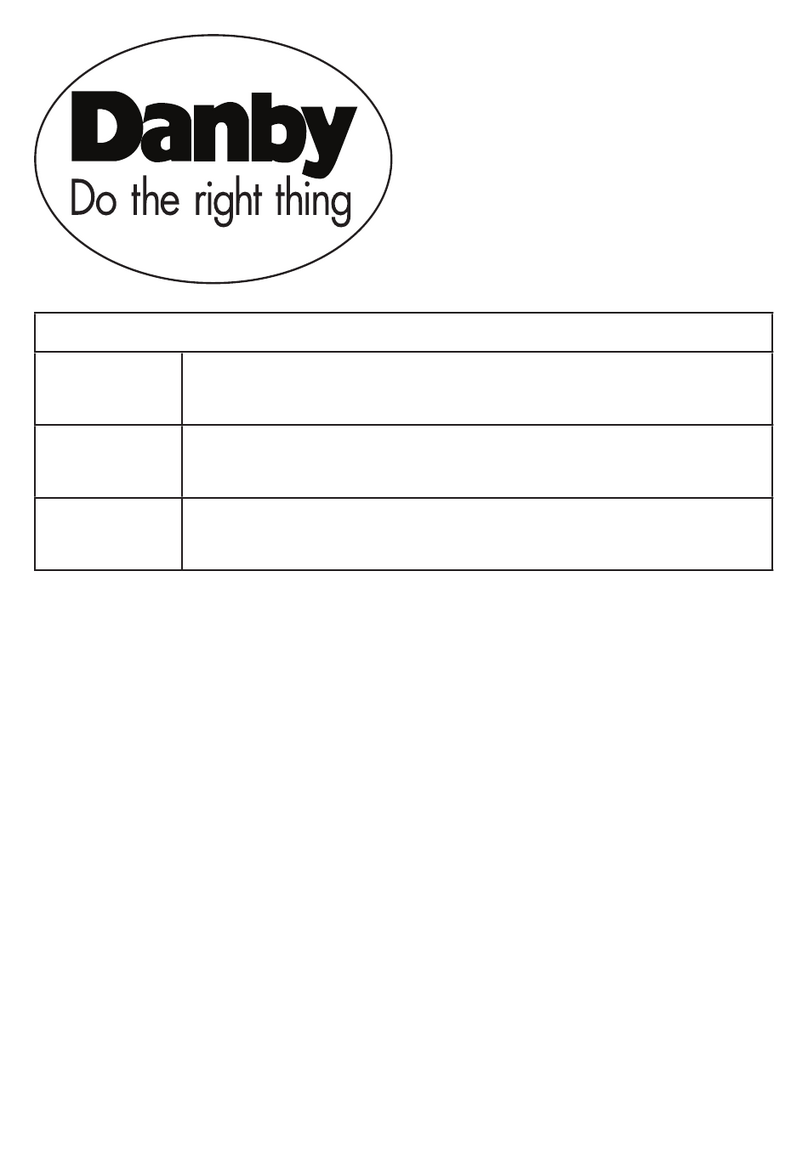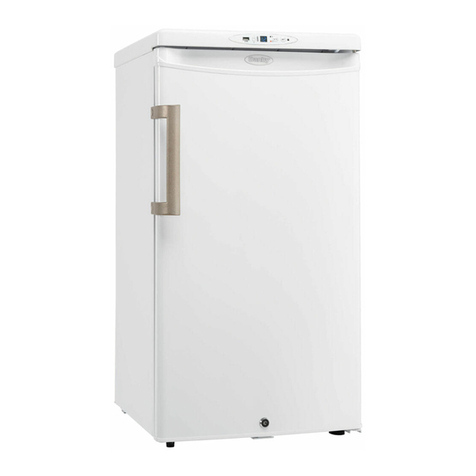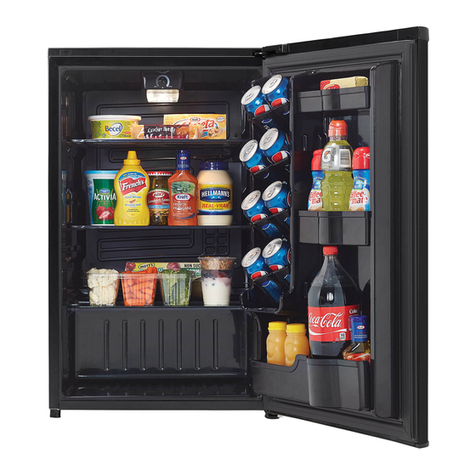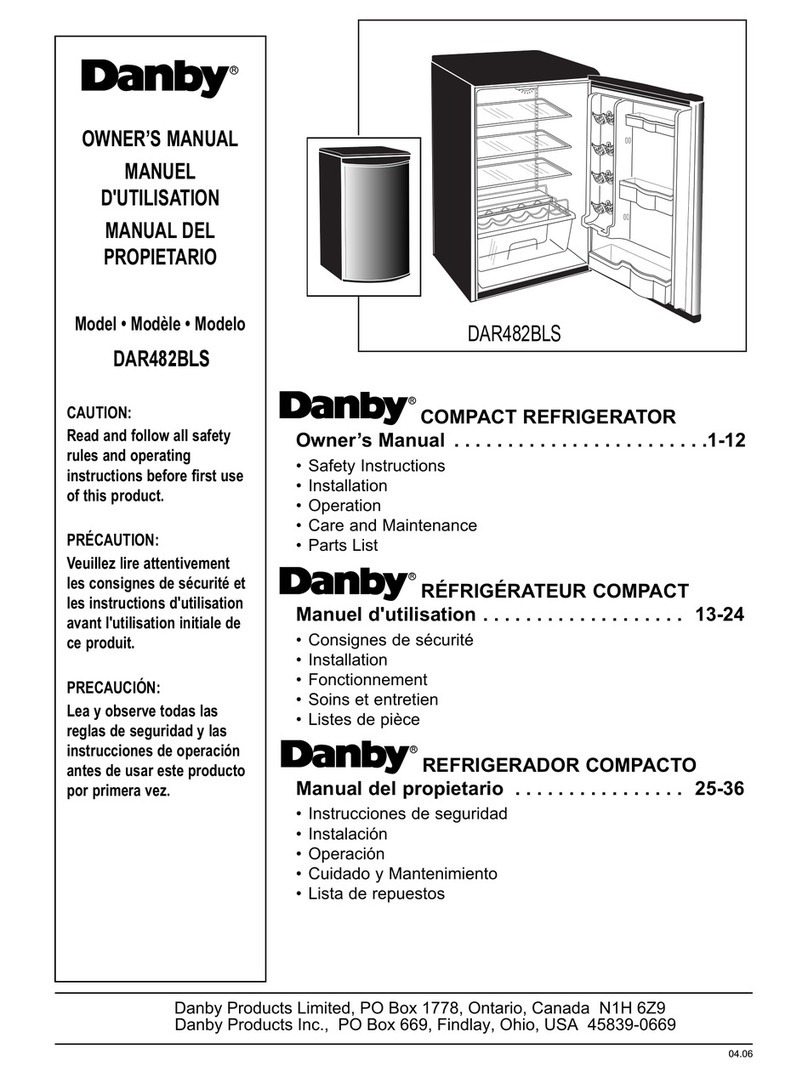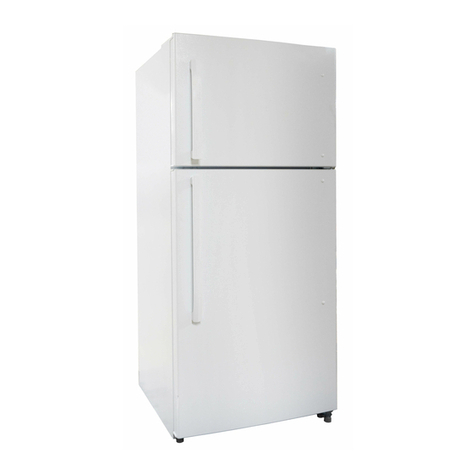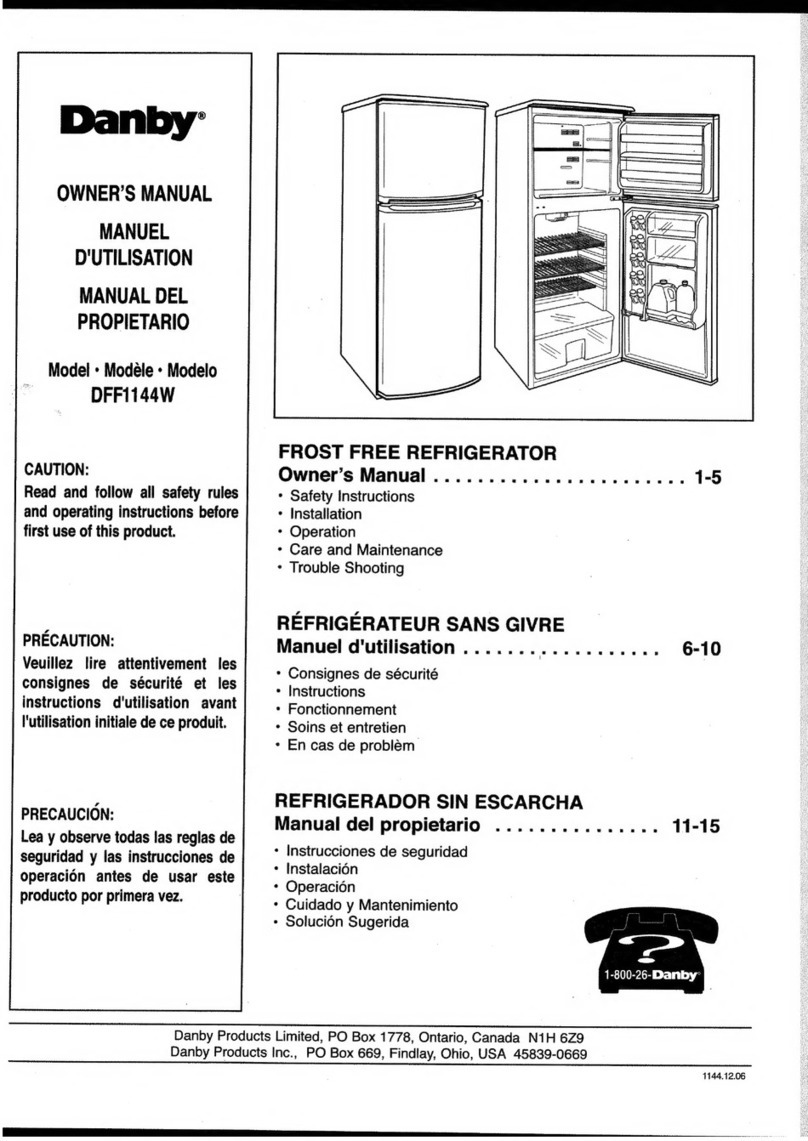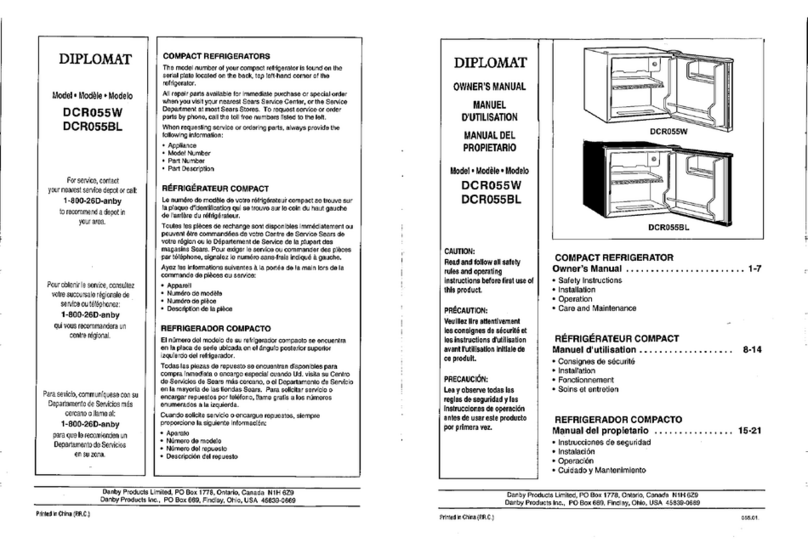
CLEANING
Ensure the appliance is unplugged before cleaning.
• To clean the inside of the appliance, use a soft
cloth and a solution of a tablespoon of baking
soda to one quart of water or a mild detergent
solution.
• Wash removable shelves in a mild detergent
solution, then dry and wipe with a soft cloth.
• Clean the outside with a soft, damp cloth and
some mild detergent.
• It is important to keep the area clean where the
door seals against the cabinet. Clean this area
with a soapy cloth. Rinse with a damp cloth and
let dry.
Note: Do not use cleaners containing ammonia or
alcohol on the appliance. Ammonia or alcohol can
damage the appearance of the appliance. Never
use any commercial or abrasive cleaners or sharp
objects on any part of the appliance.
POWER FAILURE
Most power failures are corrected within a few
hours and should not affect the temperature of your
appliance if you minimize the number of times the
door is opened. If the power is going to be off for
a longer period of time, take the proper steps to
protect your contents.
Note: Wait 3 to 5 minutes before attempting
to restart the refrigerator if operation has been
interrupted.
DEFROST
When the ambient temperature or humidity is
very high, frost may appear on the inside of the
cabinet. To defrost the cabinet, remove all contents,
unplug the appliance and leave the door standing
open. Remember to place a towel or pan under the
appliance to catch the defrosted water.
5
CARE & MAINTENANCE
VACATION
• Short vacations: Leave the appliance operating
during vacations of less than three weeks.
• Long vacations: If the appliance will not be used
for several months, remove all items and turn
off the appliance. Clean and dry the interior
thoroughly. To prevent odor and mold growth,
leave the door open slightly, blocking it open if
necessary.
MOVING
• Remove all contents.
• Securely tape down all shelves.
• Tape the door shut.
• Protect the outside of the appliance with a blanket.
DISPOSAL
This appliance may not be treated as regular waste,
it should be taken to the appropriate waste collection
point for recycling of electrical components.
For information on local waste collection points,
contact your local waste removal agency or
government office.
TROUBLESHOOTING
No power
• A fuse may be blown or the circuit breaker tripped
• Plug not fully inserted into the wall outlet
Internal temperature not cold enough or the appliance
runs continuously
• Door is not shut properly or opened excessively
• Recently added a large quantity of warm items to
the cabinet
• Close proximity to heat source or direct sunlight
• Ambient temperature or humidity is very high
• Air inlet or ventilation is blocked
Fan, light or LED display not working
• This may require professional repair, please
contact consumer service
Error code E1 or E2
• Indicates an error in the temperature sensor, please
contact consumer service
